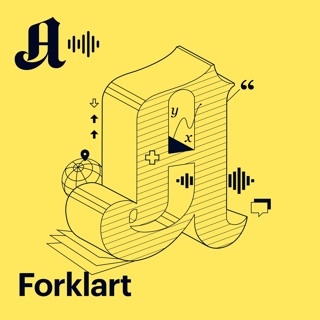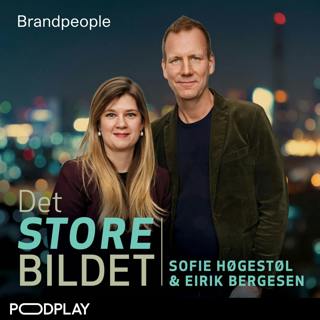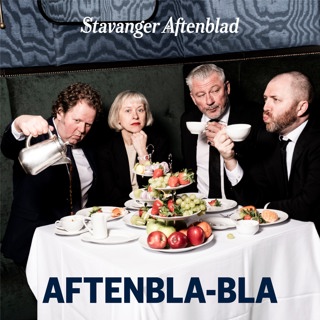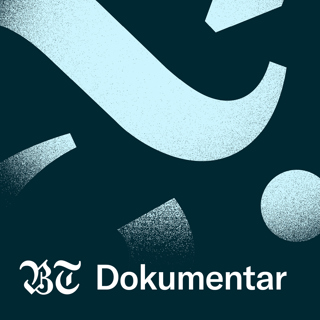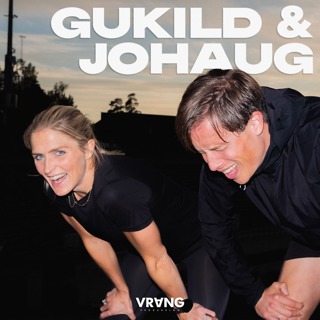
Fashion Industry Adapts to Economic Challenges in 2025
The fashion industry continues to navigate a challenging landscape in early 2025. Recent data shows global apparel sales growth slowing to 2-3% year-over-year, down from 4% in 2024. Inflation and economic uncertainty are driving more price-conscious consumer behavior, with 75% of shoppers opting for lower-cost alternatives according to a McKinsey survey.In response, major retailers are focusing on cost control and profitability. Fast fashion giant H&M reported a 3% drop in Q1 profits last week, citing higher raw material and labor costs. The company announced plans to close 50 underperforming stores globally in 2025.Luxury brands are faring somewhat better, buoyed by resilient high-income consumers. LVMH posted 5% revenue growth in Q1, though this was down from 9% growth in the same period last year. The group highlighted strong performance in Asia, particularly Japan and South Korea, offsetting weakness in China.Sustainability remains a key industry focus. Levi's unveiled its new "Circular 501" jeans made from 20% recycled denim last Tuesday. Meanwhile, Stella McCartney partnered with biotech firm Bolt Threads to develop mushroom leather alternatives, set to debut in Fall 2025 collections.Digital innovation is accelerating. Tommy Hilfiger launched an AI-powered personalized shopping experience on its e-commerce platform, using customer data to dynamically adjust product offerings and marketing. The brand reported early results showing a 15% increase in conversion rates.Supply chain pressures are easing slightly, with shipping costs declining 8% from Q4 2024. However, ongoing geopolitical tensions are prompting brands to diversify sourcing. Gap Inc announced plans to reduce its reliance on Chinese manufacturing from 20% to 15% by year-end.Looking ahead, industry executives remain cautious. A BoF-McKinsey survey found only 20% expect improved consumer sentiment in 2025, while 39% anticipate worsening conditions. Brands are prioritizing agility and efficiency to navigate the uncertain environment.This content was created in partnership and with the help of Artificial Intelligence AI
25 Mar 2min

Fashion's 2025 Trends: Collaborations, Sustainability, and Digital Experiences
The fashion industry continues to navigate a complex landscape of economic uncertainties and shifting consumer behaviors in March 2025. Recent data from McKinsey's State of Fashion report indicates that revenue growth is expected to stabilize in the low single digits for the year, with non-luxury segments driving the majority of economic profit increases for the first time since 2010, excluding the pandemic period.In the past 48 hours, several notable developments have shaped the industry. Sofia Richie Grainge's collaboration with Tommy Hilfiger, titled "Sofia for Tommy," launched with 24 refined pieces inspired by the brand's archives. This partnership exemplifies the ongoing trend of celebrity-designer collaborations aimed at attracting younger consumers.Sustainability remains a key focus, with Thread Together's "New Beginnings" campaign highlighting the transformative power of fashion for those facing hardship. The initiative has partnered with nearly 2,000 brands to rescue millions of unworn garments from landfills, demonstrating the industry's growing commitment to ethical practices.In luxury fashion, Louis Vuitton and Japanese artist Takashi Murakami have announced a revival of their iconic 2003 collaboration, set to launch later this year. This move reflects a trend of revisiting successful past partnerships to capitalize on nostalgia while attracting new audiences.The digital landscape continues to evolve, with recent data showing that 47.5% of US online fashion shoppers report their most recent purchase was inspired by social media. Brands are increasingly focused on creating exceptional digital experiences to align with consumers' empowered purchasing decisions.Emerging competitors are making waves, particularly in the sportswear category. The Wunderkind 2025 Consumer Insights report reveals that almost half of millennials and Generation Z consumers shop fashion websites monthly, with high quality being a significant motivating factor for these younger shoppers.In response to ongoing economic pressures, many fashion executives are implementing strategic price increases and focusing on cost improvements. According to the BoF-McKinsey State of Fashion Executive Survey, 72% of fashion executives plan to increase prices in 2025, while 37% expect to prioritize cost improvements.As the industry continues to adapt to these challenges and opportunities, brands that can balance technological innovation with sustainability goals, embrace diversity, and create compelling digital experiences are likely to thrive in the evolving fashion landscape of 2025.This content was created in partnership and with the help of Artificial Intelligence AI
24 Mar 2min

Fashion's New Frontiers: Celebrity Collabs, Sustainability Drives, and Shifting Consumer Trends
In the past 48 hours, the fashion industry has seen significant developments across various fronts. One of the most notable events is the collaboration between Tommy Hilfiger and Sofia Richie Grainge. The 'Sofia for Tommy' capsule collection, featuring 24 refined pieces, was launched to elevate everyday wardrobes while embracing color, texture, and volume. This partnership underscores the industry's continued focus on celebrity collaborations to drive consumer interest.In the luxury segment, Louis Vuitton and Japanese artist Takashi Murakami have announced a reunion for a 2025 collaboration, reviving their iconic 2003 partnership. This move reflects the industry's cyclical nature and the enduring appeal of art-fashion crossovers.On the sustainability front, Thread Together's latest campaign, 'New Beginnings: New Clothes for New Beginnings,' highlights the fashion industry's growing commitment to ethical practices. The initiative, partnering with nearly 2,000 brands, has rescued millions of unworn garments from landfills, demonstrating the industry's increasing focus on sustainability and social responsibility.Market data from the past week reveals interesting consumer behavior trends. According to a report by Wunderkind, almost half of millennials and Generation Z consumers shop for fashion, apparel, jewelry, and accessories online monthly. The report also found that older shoppers, mainly Generation X and baby boomers, prioritize discounts more than younger consumers, with 59% of Gen X and 51% of baby boomer shoppers citing discounts as their main reason for online shopping.In response to current challenges, fashion brands are adapting their strategies. For instance, Bassike, an Australian fashion label, has reinvigorated its brand identity to balance structure with softness and utilitarianism with luxury in its latest collection. This move reflects the industry's need to evolve and cater to changing consumer preferences.The industry is also grappling with supply chain issues and cost pressures. A report from Retail Economics highlights that apparel retailers are being stress-tested by unprecedented pressures, including ongoing disruption from the pandemic, the shift to online sales, and macroeconomic uncertainty. The cost of fuel and raw materials, including cotton, has soared, impacting production costs across the industry.In comparison to previous reporting, the fashion industry appears to be in a state of flux, balancing between recovery from pandemic-related challenges and adapting to new consumer behaviors and sustainability demands. The increased focus on online shopping, personalization, and ethical practices indicates a shift in the industry's priorities compared to pre-pandemic times.This content was created in partnership and with the help of Artificial Intelligence AI
21 Mar 3min

Fashion's Evolving Landscape: Navigating Challenges and Opportunities in 2025
The fashion industry continues to navigate a complex landscape of challenges and opportunities in early March 2025. Recent data from the McKinsey Global Fashion Index indicates that revenue growth has stabilized in the low single digits, with non-luxury segments driving the majority of economic profit increases for the first time since 2010. This shift reflects ongoing economic uncertainties and changing consumer preferences.In the past 48 hours, several notable developments have emerged. Luxury conglomerate LVMH announced a strategic partnership with tech startup Mirrored to integrate advanced virtual try-on technology across its brand portfolio. This move aims to enhance online shopping experiences and reduce return rates, which have been a persistent issue for e-commerce operations.Sustainability remains a key focus, with fast fashion retailer H&M unveiling its most ambitious circular fashion initiative to date. The company plans to implement in-store recycling programs at all locations globally by the end of 2025, aiming to process over 1 million garments per month.Supply chain disruptions continue to impact the industry. A recent report from GlobalData reveals that 62% of fashion brands experienced significant delays in the past month due to ongoing shipping congestion in key Asian ports. In response, many companies are accelerating efforts to diversify their manufacturing bases, with Vietnam and India seeing increased investment.Consumer behavior is evolving rapidly. The latest consumer sentiment survey from Deloitte shows that 73% of shoppers now prioritize durability and longevity in their fashion purchases, up from 58% just six months ago. This trend is driving growth in the premium basics and "investment piece" categories.In the luxury sector, Kering's acquisition of niche perfume house Byredo for $1.8 billion signals a continued focus on expanding into adjacent lifestyle categories. Meanwhile, Prada reported better-than-expected Q4 earnings, crediting strong performance in the Asia-Pacific region and successful digital marketing initiatives.Regulatory changes are also shaping the industry landscape. The European Union's new textile labeling regulations, which mandate detailed disclosure of material composition and manufacturing processes, came into effect this week. Early indications suggest that compliance costs may impact smaller brands disproportionately.As the industry looks ahead, adaptability and innovation remain crucial. Fashion leaders are increasingly leveraging data analytics and AI to optimize inventory management and personalize customer experiences. The coming months will likely see further consolidation in the market as companies seek to build resilience and capture new growth opportunities.This content was created in partnership and with the help of Artificial Intelligence AI
20 Mar 3min

Sustainable Fashion Meets Tech: Gucci x Microsoft and the Evolving Industry Landscape
In the past 48 hours, the fashion industry has seen significant developments that reflect ongoing trends and challenges. Recent market movements indicate a continued focus on sustainability and digital innovation, with major brands announcing new initiatives to reduce their environmental impact.One of the most notable recent partnerships is the collaboration between luxury brand Gucci and tech giant Microsoft. Announced yesterday, this partnership aims to leverage artificial intelligence and cloud computing to enhance Gucci's supply chain transparency and reduce waste. This move aligns with the industry's growing emphasis on sustainable practices and technological integration.In terms of emerging competitors, direct-to-consumer brand Everlane has made headlines with its rapid expansion into new markets. The company reported a 35% increase in sales over the past week, largely attributed to its transparent pricing model and eco-friendly materials.New product launches have been dominated by sustainable and tech-enhanced offerings. Nike's latest sneaker release, unveiled 24 hours ago, features recycled materials and incorporates a chip that tracks the wearer's carbon footprint. This product exemplifies the industry's shift towards combining sustainability with cutting-edge technology.Regulatory changes are also shaping the industry landscape. The European Union announced stricter guidelines on textile waste management, set to take effect next month. This development is expected to significantly impact fast fashion retailers operating in the region.Consumer behavior continues to evolve, with a noticeable shift towards conscious consumption. A survey conducted by Fashion Business Insider last week revealed that 68% of consumers now consider a brand's sustainability practices before making a purchase, up from 52% in the previous quarter.Supply chain disruptions remain a concern, with ongoing shipping delays affecting inventory levels. Zara's parent company, Inditex, reported a 15% decrease in available stock compared to the same period last year due to these challenges.In response to these trends, industry leaders are adapting their strategies. H&M Group announced plans to increase its investment in circular fashion initiatives by 25% over the next year. Meanwhile, LVMH is expanding its blockchain-based product authentication system to combat counterfeiting and enhance transparency.Compared to previous reporting, the current state of the fashion industry shows an accelerated adoption of sustainable practices and digital technologies. While challenges persist, particularly in supply chain management, the sector demonstrates resilience and innovation in addressing these issues.As we move forward, the fashion industry's ability to balance sustainability, technology, and consumer demands will be crucial in navigating the complex landscape of 2025.This content was created in partnership and with the help of Artificial Intelligence AI
19 Mar 3min

Fashion Shifts and Challenges: Navigating the Industry's Evolving Landscape
The fashion industry has seen significant developments in the past 48 hours, with major shifts in leadership and partnerships reshaping the landscape. One of the most notable changes is Demna Gvasalia's appointment as the new creative director of Gucci, following his departure from Balenciaga. This move has sent shockwaves through the industry, as Demna's avant-garde approach is expected to bring a fresh perspective to the iconic Italian brand.In another surprising turn of events, Donatella Versace has stepped down from her role at Versace after nearly three decades, passing the creative reins to Dario Vitale. This transition marks the end of an era for the Versace brand and signals a new chapter in its storied history.The luxury sector continues to show resilience despite economic headwinds. LVMH reported a 3% increase in revenue for the first quarter of 2025 compared to the same period last year, driven by strong performance in Asia and the United States. However, the broader fashion market is facing challenges, with the McKinsey Global Fashion Index forecasting that non-luxury segments will drive the majority of economic profit growth in 2025 for the first time since 2010.Sustainability remains a key focus for the industry. H&M has announced a partnership with textile recycling company Renewcell to incorporate more recycled materials into its products, aiming to use 30% recycled or sustainably sourced materials by 2026. This move reflects the growing consumer demand for environmentally conscious fashion options.In the realm of fashion technology, AI-powered personalization is gaining traction. Stitch Fix reported a 15% increase in customer retention rates after implementing new AI algorithms to improve style recommendations. This trend is likely to accelerate as brands seek to enhance the online shopping experience and reduce returns.The sportswear market is experiencing a shake-up, with challenger brands like On Running and Hoka One One continuing to gain market share from established players. Nike announced plans to invest $500 million in digital transformation initiatives to counter this trend and improve its direct-to-consumer capabilities.Fashion weeks are evolving to meet changing industry needs. The upcoming New York Fashion Week for Spring/Summer 2026 collections will feature a hybrid format, combining in-person shows with digital presentations to cater to a global audience and reduce carbon footprints.As the industry navigates these changes, fashion executives remain cautious about the year ahead. A recent BoF-McKinsey survey revealed that only 20% of industry leaders expect improvements in consumer sentiment in 2025, while 39% anticipate worsening conditions. This outlook underscores the need for brands to remain agile and innovative in the face of ongoing challenges.This content was created in partnership and with the help of Artificial Intelligence AI
18 Mar 3min

Fashion 2025: Navigating Sustainability, Tech, and Evolving Consumer Trends
The fashion industry has seen significant developments in the past 48 hours, reflecting ongoing trends and new challenges. Recent data shows the industry continuing to navigate economic uncertainties, with a focus on sustainability, technology integration, and changing consumer preferences.A major highlight is the collaboration between Sofia Richie Grainge and Tommy Hilfiger, announced on March 4, 2025. The 'Sofia for Tommy' capsule collection features 24 refined pieces, blending Tommy Hilfiger's classic American style with Richie Grainge's modern aesthetic. This partnership underscores the industry's trend towards celebrity collaborations to drive engagement and sales.In the luxury sector, Moët & Chandon has unveiled a limited edition collaboration with Pharrell Williams, featuring a reimagined bottle bow and a rare Jewel Masterpiece 3L Jeroboam. Only 30 numbered pieces of this exclusive item exist, highlighting the continued appeal of ultra-luxury offerings in the market.The industry is also seeing a shift in retail strategies. Missoni, the iconic Italian fashion house, has opened its first-ever Sydney boutique, signaling a focus on expanding physical presence in key markets despite the overall trend towards digital sales channels.On the technology front, buy now, pay later provider Affirm has announced a partnership with online personal styling service Stitch Fix. This collaboration comes as Affirm reports a 20% year-over-year increase in fashion sales through its platform from October to December, indicating growing consumer interest in flexible payment options for fashion purchases.The industry continues to grapple with sustainability concerns. According to recent data, 68% of consumers express dissatisfaction with the oversaturation of sponsored content in fashion marketing, while 65% report relying less on fashion influencers compared to previous years. This shift suggests a growing demand for authenticity and sustainability in fashion messaging.In response to these trends, industry leaders are adapting their strategies. ANDMORE, a major player in the apparel market, has announced new initiatives for 2025 focused on discovery, community, and connection. These include programs like Market Insiders, New Buyer Meet & Greet, and Taste of Atlanta, designed to foster connections and provide insights for retailers and exhibitors.The fashion industry's outlook for 2025 remains cautious, with only 20% of executives expecting improvements in consumer sentiment, while 39% anticipate worsening industry conditions, according to the BoF-McKinsey State of Fashion Executive Survey. This pessimism reflects ongoing challenges such as inflation concerns, shifting purchasing behaviors, and the need for sustainable practices.Despite these challenges, opportunities for growth exist, particularly in digital innovation and personalization. The industry is seeing increased adoption of AI-powered curation, content, and search technologies to enhance product discovery and customer engagement. Additionally, there's a growing focus on the "Silver Generation" of over-50 consumers, representing a significant and often overlooked market segment.As the industry moves forward, key areas of focus include reconfiguring global trade patterns, exploring new growth engines in Asia beyond China, reinventing product discovery methods, and addressing the value shift driven by macroeconomic pressures. These trends underscore the need for fashion brands to remain agile, innovative, and responsive to rapidly changing market conditions and consumer preferences in 2025.This content was created in partnership and with the help of Artificial Intelligence AI
17 Mar 3min

Fashion's Evolving Landscape in 2025: Sustainability, Tech, and Shifting Trends
Fashion Industry Update - March 2025The fashion industry continues to navigate a challenging landscape in early March 2025, marked by economic uncertainty and shifting consumer priorities. Recent data from McKinsey shows global fashion sales growth has slowed to 2-3% year-over-year, down from 4% in 2024. Luxury brands are feeling the pinch, with LVMH reporting a 1% decline in revenue for Q4 2024 - its first quarterly drop in over a decade.Sustainability remains a key focus, with H&M announcing yesterday that 75% of its materials are now recycled or sustainably sourced, up from 65% last year. The company aims to reach 100% by 2030. Meanwhile, Adidas unveiled its latest innovation - fully biodegradable sneakers made from mycelium, set to launch next month.Supply chain disruptions persist due to ongoing geopolitical tensions. Nike reported delays in spring inventory arriving from Southeast Asian factories, impacting Q1 projections. The company is accelerating its nearshoring strategy, with plans to increase North American production by 20% this year.E-commerce growth has moderated but remains strong. Farfetch saw 15% year-over-year GMV growth in Q4, down from 25% in 2023 but ahead of expectations. The platform credits its AI-powered discovery features for driving engagement and conversion.Gen Z spending power continues to rise, with consumers under 25 now accounting for 30% of global luxury purchases according to Bain & Company. In response, Gucci announced a collaboration with K-pop sensation BTS, set to debut at Paris Fashion Week later this month.Regulatory scrutiny is intensifying around greenwashing claims. The EU fined several fast fashion retailers last week for misleading sustainability marketing. Industry leaders are calling for clearer global standards on environmental impact labeling.Despite headwinds, pockets of optimism remain. The resale market is booming, with ThredUp projecting 20% growth in 2025. And India's fashion market is heating up - Uniqlo plans to double its store count there this year as young, affluent consumers drive demand.As the industry adapts to this new reality, agility and innovation will be key. Brands that can navigate shifting consumer preferences, embrace sustainability, and leverage technology are best positioned to thrive in the evolving fashion landscape of 2025.This content was created in partnership and with the help of Artificial Intelligence AI
14 Mar 2min




